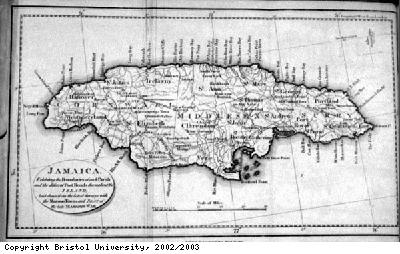Page 342 of 352 pages « First < 340 341 342 343 344 > Last »
Sugar mill
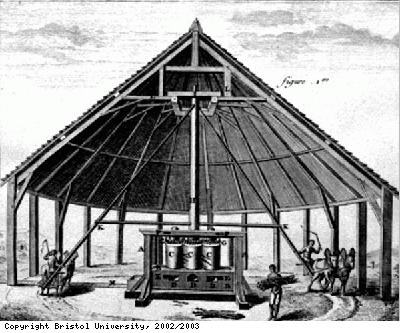
Description:
Sugar mill, from Dictionnaire des Sciences, by Dennis Diderot, 1762. Cattle, horses, wind, water and steam were used to power the sugar mills used on the slave plantations in the Caribbean and America.
Creator: Diderot
Date: 1762
Copyright: Copyright Bristol University
Preparing the ground
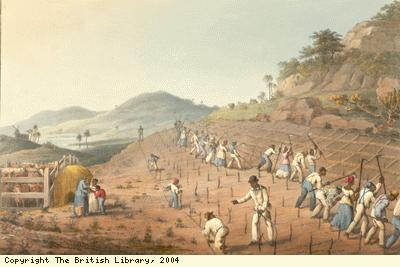
Description:
Picture: Preparing the ground, from Ten Views of Antigua, by W Clark, 1823.
By permission of the British Library
Copyright: Copyright The British Library
Object ID:(BL Shelfmark: 1786.c.9 plate II)
Sugar cane
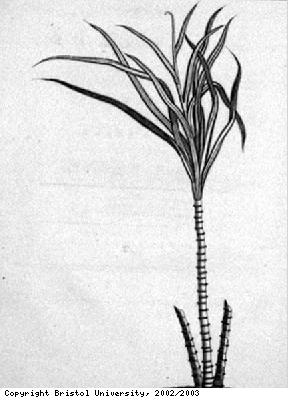
Description:
Sugar cane, from The Sugar Cane, a Poem in Four Books with Notes by James Grainger, 1764. Sugar cane was grown on the slave plantations in the Caribbean and America. Sugar cane was first cultivated thousands of years ago on the island of New Guinea in the Pacific Ocean.
Creator: Grainger
Date: 1764
Copyright: Copyright Bristol University
Advert for sale of estate on Nevis
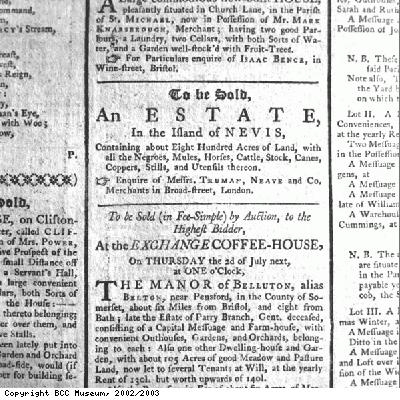
Description:
Advertisement from Felix Farley’s Bristol Journal, an estate for sale on Nevis, 20th June 1767
Creator: Felix Farley's Bristol Journal
Date: 20th June 1767
Copyright: Copyright BCC Museum
Cotton gin
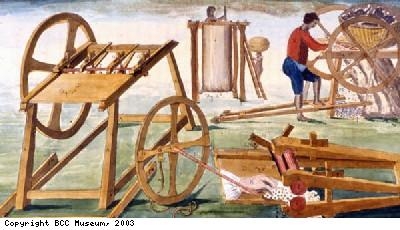
Description:
Illustration of cotton gin with black operative, from Elegancies of Jamaica, by Rev J Lindsay. Cotton was grown on plantations on the Caribbean islands, but it was the southern states of America that became the main producers.This machine, called a cotton gin,for cleaning the seeds from the cotton fibre. The development ofthe cotton gin, hitherto a slow and expensive hand process, led to a huge expansion in cotton growing in America and a rise in the demand for slaves there.
Creator: Rev J Lindsay
Date: 1758 - 1771
Copyright: Copyright BCC Museum
An ideal plantation
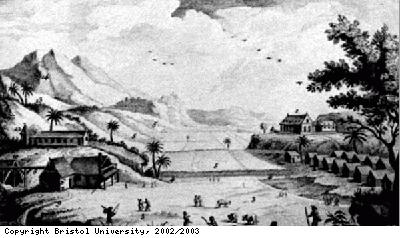
Description:
An ideal plantation, in Dictionnaire des Sciences, by Denis Diderot, 1762. This picture shows the layout of a Caribbean plantation, with the owner’s house, the slave’s huts, the mill and the boiling house.
Creator: Diderot
Date: 1762
Copyright: Copyright Bristol University
Adzehead and axeheads

Description:
Adzehead and axeheads from the Arawak and Carib people who lived on the islands of Jamaica and Barbados in the Caribbean. Tools such as these were made with shell and stone in the absence of metal.
Creator: Arawak and Carib
Date: unknown
Copyright: Copyright BCC Museum
Object ID:Ea 1714, E 4022, Ea 6056
Pottery bowl from South America

Description:
Pottery bowl made by the Carib people of British Guiana (now Guyana), in South America.
Creator: Carib
Date: unknown
Copyright: Copyright BCC Museum
Object ID:E 5861
A Family of Caribs
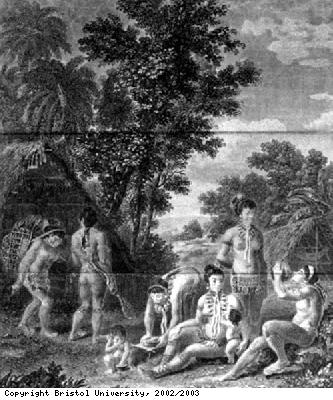
Description:
A Family of Caribs, from Bryan Edwards, The History…of the British Colonies in the West Indies, 1801.The local Carib peoples who lived on the Caribbean islands were seen as a source of labour by the Spanish settlers.The combination of hard labour and newly introduced European diseases soon killed the majority.
Creator: Bryan Edwards
Date: 1801
Copyright: Copyright Bristol University
Page 342 of 352 pages « First < 340 341 342 343 344 > Last »
